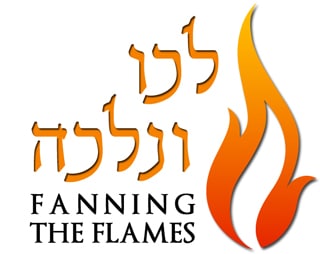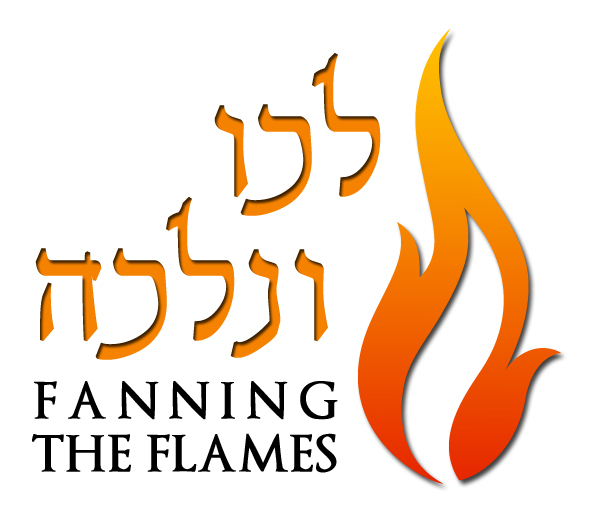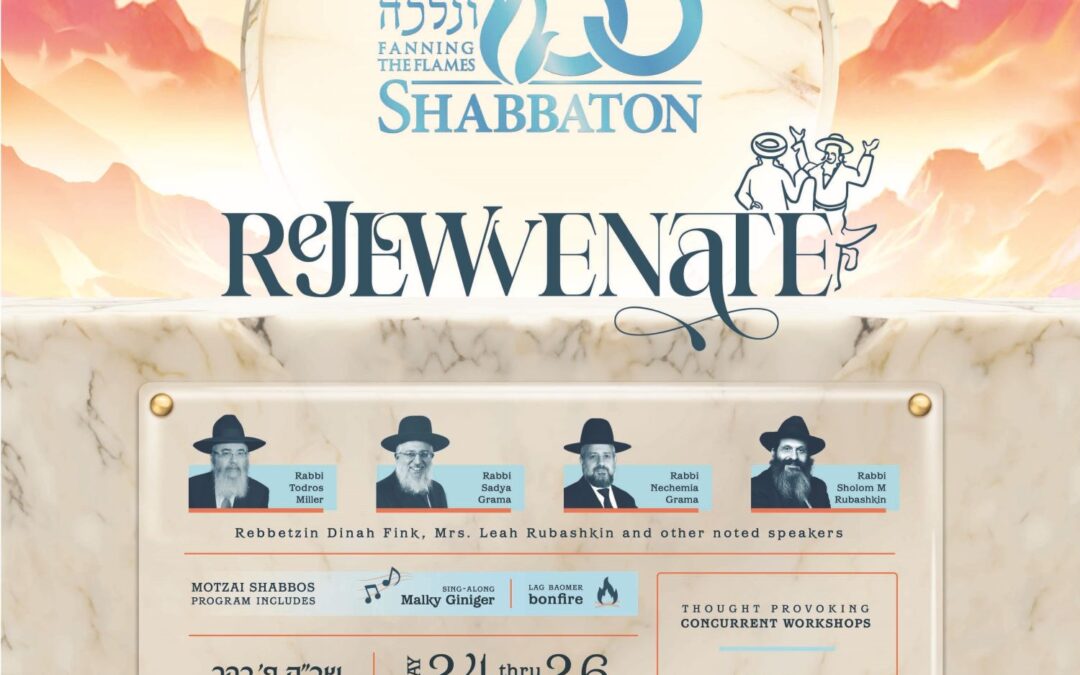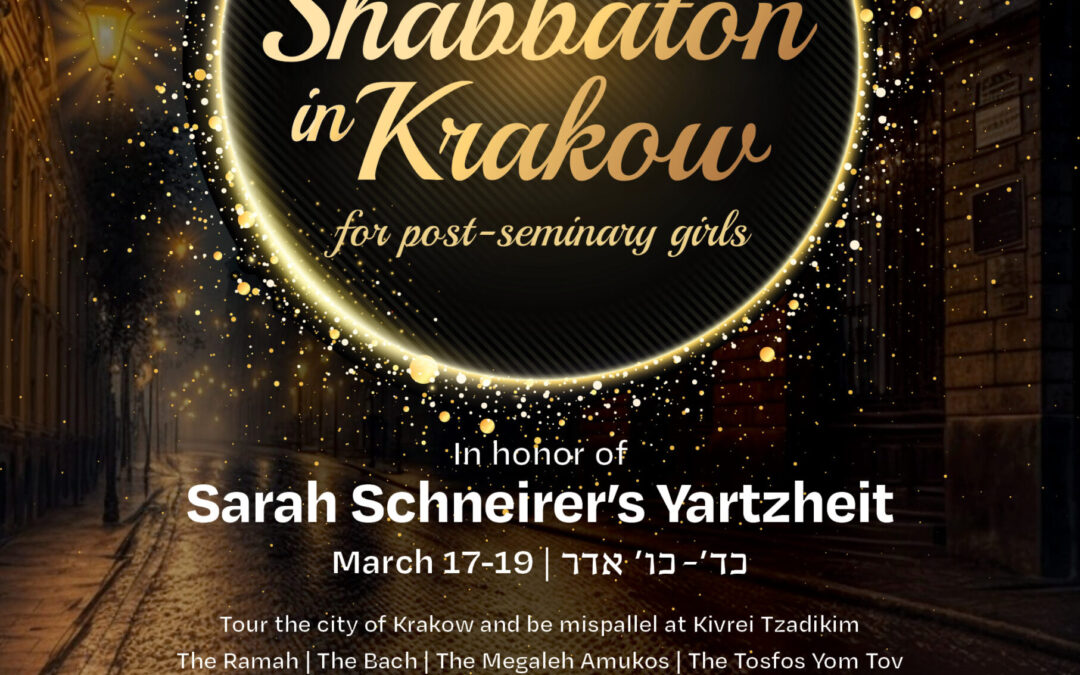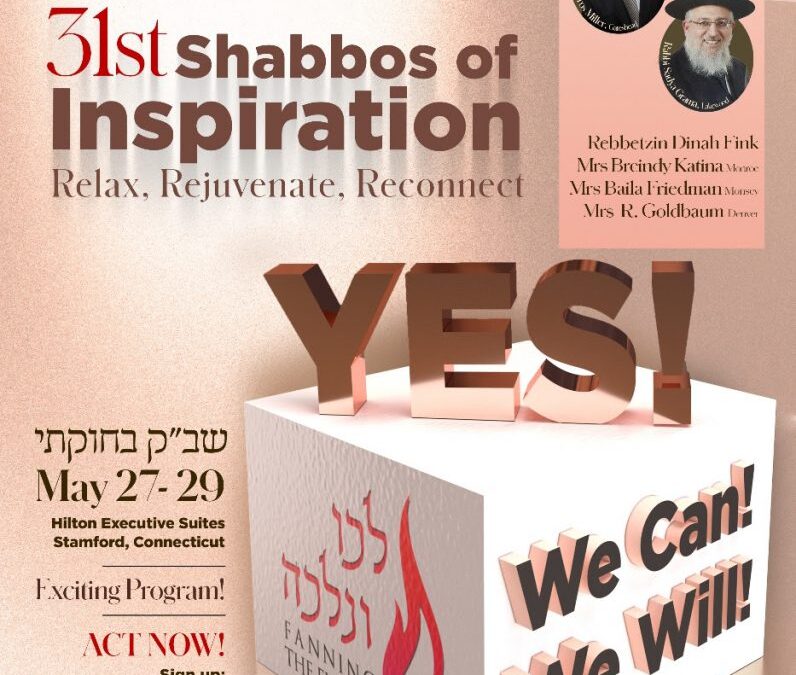A LVN Shabbaton in Eretz Yisrael! What could be more exhilarating, more uplifting, for LVN post-seminary girls than joining together to spend Shabbos in the Palace of the King? Mrs. Marks, the exceptional director of the LVN Yerushalayim branch, decided it was the perfect way to strengthen the ties of the weekly shiur-goers, and she found the ideal location for it too. Last Shabbos 20 girls came from all over Yerushalayim to Moshav Matisyahu, an idyllic setting for what proved to be an extraordinary experience. Graced with the presence of Rebbetzin Fink, who had flown in from the U.S. to participate, the group took part in a Shabbaton that they will reminisce about long after the winter has drawn to a close.
The theme for the weekend was “Shivti B’vais Hashem,” a concept that tied in beautifully to the Shabbaton, with the shoresh of the word Shivti being Shabbos. Along with cooking all the food for the Shabbos meals, the girls were divided into groups, with each group responsible for designing table settings and centerpieces correlating to the chosen theme for one of the four seudos that they would be sharing together. The girls proved that they were certainly up to the task, outdoing themselves to create an atmosphere for each meal that was both pleasing to the eye and intriguing to the mind.
The Shabbaton began with Mrs. Marks speaking to the girls, introducing the theme and elaborating on the concept of bayis. She explained that the purpose of a bayis is that it should be an edifice of protection, enabling those within to stay safe from the negative influences outside that threaten to penetrate. After kabbalas Shabbos the girls headed to the table for the seudah, where they were greeted by centerpieces made of purple shoes! The Hebrew word for purple is segol, which tied into Shabbos being a symbol for our special status as the am segulah. The shoes represent the transformation we make as we trade in weekday garb for special attire to prepare for Shabbos. Rebbetzin Fink welcomed everyone, drawing in one and all to create a feeling of connection and warmth. After the seudah they all had the privilege to pay a visit to one of the chashuve senior residents of the community, a woman named Esther Alsten, who charmed the audience with her wit and wisdom while imparting lessons in anava gleaned from her life experiences.
After davening the following morning, Rebbetzin Fink spoke to the girls before the second seudah. She discussed how Paroh in Mitzrayim was the epitome of the yetzer horah, representing chitzoniyus on the most superficial level. She elaborated on how our role in life is to break the idols of Mitzrayim, to destroy the barriers that prevent us from refining our midos, so that we can reach the ideal of perfecting the pnimiyus.
For this second seudah the girls focused on the second half of the theme passuk, “kal yemei chayai,” and each table was designed to represent a different milestone in one’s life. There was a bris table, a bar mitzvah table and a chasunah table, to remind us that whichever stage you are at, your life must always be connected to the derech hatorah. Once again the seudah was replete with divrei torah and zemiros, with Rebbetzin Fink giving the girls a taste of the depth of meaning hidden in the zemiros that we regularly sing every Shabbos.
The table settings for shalosh seudos once again connected to the words “kal yemei chayai,” but in an entirely different way. Each plate was designed to look like a clock with the fork and the spoon serving as the hands of the clock, a clever way to impart the message that our every minute must be dedicated to avodas Hashem. To drive the point home further, the girls were given magnets that listed the shesh mitzvos t’midios, principles that must always be a focus in our minds and hearts. During shalosh seudos everyone participated in a game. Cards with one of three pictures were handed to each girl. If the card depicted lips that meant you were a panelist, a picture of a key meant “remain silent,” and a picture of an arrow told the card-holder that it was optional to speak. Questions relating to the theme were discussed, with the card-holders responding or listening depending on the instructions represented by the pictures on their card. With each new question, the cards changed hands so that everyone had a chance to participate and enjoy the interaction.
There was one last seudah to enjoy, that of melaveh malkah. Everyone was given a flowerpot to decorate, with the instructions that their design incorporate a lesson learned over Shabbos. One flowerpot had a sky painted on the bottom and the ground painted on top to symbolize the olam hafuch in which we live. Another pot depicted computers and other devices on its surface, to represent the external superficial world that those things create. The girls then danced together, giving special attention to the three kallahs in their midst, and trying to grab hold of the special camaraderie that the Shabbos together had created.
The Shabbaton drew to a close with a perfect crescendo as they all piled into a van and headed to the Kosel for maariv and nishmas at midnight. What an ideal way to end a Shabbos that was me’ein olam habba in every possible aspect. May we all be zoche to join together in the very near future to experience another such Shabbos of ruchniyus, b’vias goel tzedek, b’vias hamashiach!
Tzippy Zager
